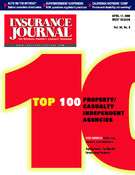Given the pace of today’s technological developments, it is often difficult for agency principals to know where to get the most bang for their buck.
As most agency principals know, it is important to take a strategic approach when it comes to technology. Elements of such a strategy might include establishing a culture that focuses on process and technology, instilling a workflow environment that focuses on clients and service, and taking advantage of available carrier interface and download offerings. But at the end of the day, strategy alone is just the foundation. Practical action is required.
Two recent developments – real-time, multiple-company rating and electronic communication – are paving the way for agencies to capitalize on technology and see measurable improvements in efficiency and customer service. By taking action, agents and brokers can enjoy more streamlined sales processes and enhanced communication with carriers.
Efficient selling
Earlier this year, at the request of New York agents, the Independent Insurance Agents and Brokers of America adopted a major policy statement calling for the industry to speed implementation of real-time, multiple-company rating. The improved workflow would free up considerable time for agencies to sell new policies and improve customer service, not to mention greatly reduce current levels of agent frustration.
Real-time, multiple-company rating lets agents and brokers request and get rates from more than one carrier simultaneously, working through whichever agency management system or comparative rater they choose. By moving to that new workflow, agencies would not have to deal with multiple-company Web sites. Separate logons, passwords and multiple-data entries would be a thing of the past.
Independent agents and brokers could be in a much-improved position to compare companies. As a result, they can provide customers with the best combination of price, coverage and service – and be freed up to increase sales and provide proactive customer service that builds retention. Moreover, carriers will benefit from increased agency sales and customer retention. Vendors will be able to meet the needs of agency customers and promote a healthy customer base.
Enhanced communication
Agents also can reap practical benefits from technology in the exchange of information with carriers, and should strive to handle carrier communications within their existing agency workflows.
By using e-mail and real-time alert messages, and by cooperating with carriers and agency management system vendors, agencies could handle most communications electronically. Those workflows allow agents and brokers to process information with a decreased degree of human involvement, thus reducing the overall transaction time within the agency.
An Agents Council for Technology task group found that agents and brokers would like to receive bulletins and other nonpolicy/ customer specific information by e-mail. In many cases, an e-mail notification with a link to the carrier site is most appropriate. But when the communication relates to a specific customer and/or policy, such as a notification of late payment or an underwriter inquiry, agents would prefer to receive alert messages – or instant communication – directed to the individual in the agency responsible for servicing the policy.
Alerts have the advantage of automatically attaching to the user’s activity log or the policy/customer activity log within the agency management system. They also provide a high level of security for the included data.
ACT recommends the use of alert messages, which are available from some vendors on a proprietary basis, whenever appropriate. User-group leaders are working through AUGIE (ACORD-user groups information exchange) to explore ways to bring uniformity to the process and to encourage broader adoption. Options being considered include modifying current standards or, if necessary, developing a new standard.
By offering that capability and functionality, carrier communications could be targeted and delivered more consistently to the appropriate person within the agency. That would let carriers offer more efficient workflows and responsive service to their agents. In turn, agents could provide more responsive service to clients – and secure higher retentions.
Agent involvement is key
Independent agents and brokers should work with their associations and management system user groups to convince carriers and vendors to make real-time, multiple-company rating a reality. At the same time, they must implement new technology as soon as it is made available, because carriers and vendors look at usage when deciding what investments to make and what initiatives to pursue.
The same holds true with electronic communication. Agents and brokers can take part in industry efforts to bring uniformity to the process, and advocate action by carriers and vendors. By adopting and making the best use of available technology, agents and brokers also can improve their workflows and encourage continued development of process-enhancing technology offerings by carriers and vendors.
Bob Slocum, an independent agent at Slocum Insurance Agency in Warwick, R.I., also is chair of the Agents Council for Technology, which is affiliated with the Independent Insurance Agents & Brokers of America. Slocum can be reached at bslocum@slocumins.com. This article represents the views of the author and should not be construed as an official statement of ACT.
Was this article valuable?
Here are more articles you may enjoy.


 Dubai Floods Expose Weaknesses to a Rapidly Changing Climate
Dubai Floods Expose Weaknesses to a Rapidly Changing Climate  Uncertainty Keeps Prices Up; No Prior-Year Loss Development: Travelers
Uncertainty Keeps Prices Up; No Prior-Year Loss Development: Travelers  Why New York’s Attorney General Objects to Trump’s Bond Insurer
Why New York’s Attorney General Objects to Trump’s Bond Insurer  Progressive Gains as Drivers Shop Around for Auto Insurance—Again
Progressive Gains as Drivers Shop Around for Auto Insurance—Again 


